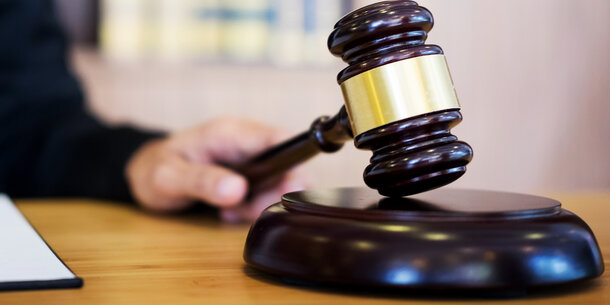Since the explosion of the Covid-19 pandemic in March, courts have turned to short- and long-term solutions to ensure that the public has continuous access to our justice system. Though most federal and state courts initially closed their doors to prevent the spread of Covid-19, many are now rapidly adapting their operations as they seek to establish a new normal.
The Brennan Center has been tracking and analyzing courts’ responses to the pandemic. It has also analyzed scholarship on the impact of video proceedings on access to justice and developed principles to inform the continued use of remote proceedings.
Limited in-person hearings proceed
Several jurisdictions have resumed some version of in-person proceedings while also adhering to social distancing precautions. As of September 10, 30 of the country’s 94 federal district courts had issued orders allowing jury trials to resume. Judges and court staff have implemented new policies to make sure that courtrooms are regularly cleaned and jurors are at least six feet from each other at all times. In the Northern District of Texas, for example, jurors are protected by plexiglass barriers and face shields.
Despite these precautions, courts have faced challenges. In Ohio’s Ashland County Common Pleas Court, a defendant and his counsel began exhibiting Covid-19 symptoms during jury selection and were taken to the hospital. Among federal district courts, at least nine have had employees test positive for Covid-19 since the outset of the pandemic.
Some legal defender services have expressed strong opposition to courts reopening for in-person appearances, arguing that doing so endangers the health of their clients, lawyers, and courthouse employees. In July, nine legal aid groups in New York City issued a letter to the state’s chief administrative judge urging him to roll back a new policy that would restart some in-person proceedings. The letter argues that the “pandemic has had a disproportionate impact on low income Black and Brown people, the same community that is also disproportionately arrested and represented in court cases in NYC and will bear the brunt of [the reopening].” On July 14, the eve of the courts’ scheduled reopening, the legal aid groups sued New York State’s Office of Court Administration. Their motion was denied by a federal judge at the end of the month.
Evictions and foreclosures resume
Most states have allowed judges to resume eviction and foreclosure hearings, leaving as many as 30 to 40 million Americans housing insecure. The federal CARES Act’s temporary moratorium on certain evictions expired on July 24. However, on September 1, the Centers for Disease Control and Prevention ordered a halt on certain evictions nationwide through the end of the year to “prevent the further spread of Covid-19.” The practical impact of this order remains to be seen.
In at least 26 states, including Georgia, Texas, and Florida, courts have been holding remote eviction and foreclosure hearings to remove people from their homes, according to the Wake Forest Law Health Justice Clinic. Evictions by Zoom have been criticized by some advocates as “cruel.” A missed call or a failed internet connection, they say, can be the “difference between housing and homelessness.”
But remote hearings have also allowed for public scrutiny of the eviction process. One case that attracted recent attention was that of Krisi Eiland, a single mother of three who became homeless after being evicted from her Kansas City, Missouri, home. During a remote hearing, the landlord’s representative was recorded as saying that the tenant was “not [his] problem” in a video that went viral in August.
Virtual proceedings remain the norm
The vast majority of federal and state courts implemented virtual court proceedings for at least part of the pandemic. The Supreme Court opted to postpone oral arguments in its spring cases before reassigning about half of them to be livestreamed as audio during the spring and early summer. As of September 10, at least 86 the country’s 94 district courts and all of the federal appellate courts were opting to hold at least some of their hearings remotely. And as many as 38 states currently either mandate or encourage their courts to use virtual hearings when possible.
In August, Texas held what is believed to be the first virtual criminal jury trial for a misdemeanor case. Later that month, Florida became the first state to hold a full civil jury trial entirely remotely.
Remote jury trials have not always been smooth sailing. In one California civil case, virtual jury selection prompted a mistrial motion, with the defendants alleging that the plaintiff appeared to be casually talking to some of the prospective jurors while the counsel and judge were in a separate video chat. The complaint also alleged that one prospective juror appeared to be laying in “a bed, curled up, and possibly asleep,” and that another juror was “working out on an elliptical machine.” The judge denied the motion, though the court subsequently instituted some changes to the video conferencing protocol by placing jurors, witnesses, and the parties in a “waiting room,” preventing them from interacting with each other whenever the judge is not present.
Though some courts had experimented with virtual proceedings in the past, such widespread use of this technology is unprecedented. Some judges have indicated that they would like to see video become a permanent feature of court operations, while others have expressed concern that remote proceedings hinder access to justice.
The Brennan Center has found that existing scholarship suggests reason for caution in the widespread adoption of video hearings. More research and broad stakeholder engagement are both critical as courts’ policies continue to evolve.


